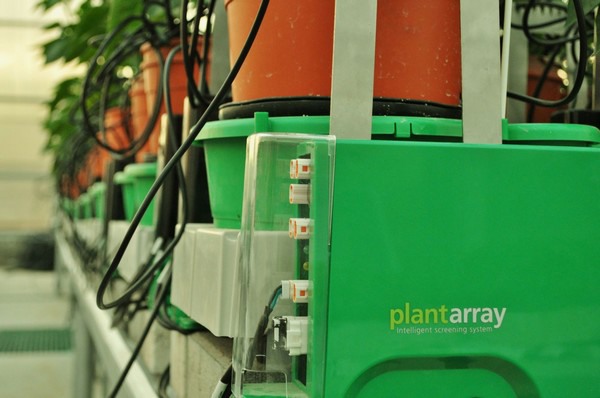In their research on tomato plants, Plant DiTech explored how different varieties respond to drought stress using their PlantArray system, which monitors the water balance of the soil-plant-atmosphere.
"Instead of focusing on the final yield, we observed changes over multiple years, marking a novel approach in such studies. We found that genotypes behave differently under drought conditions and that measuring a single trait at one point in time doesn't provide sufficient information. Continuous measurement over the growth period revealed the true dynamics of each variety. Despite the complexity of maintaining similar drought conditions for all types, we managed to define a standard drought evaluation point which led to insightful observations," says Linoy Uziel over at Plant DiTech.

Interestingly, the research showed that high-transpiring plants, or those that use water faster, proved highly adaptable, quickly closing their stomata (small openings in the leaf surface) when sensing water shortage and resuming activity once the water was restored.
"We discovered that plants that were able to reduce their water usage quickly were better at surviving stress. This resilience was previously underestimated due to difficulties in characterizing it. Notably, we found that traits aiding in stress recovery can go unnoticed during the actual stress period but are crucial for overall plant growth under water-stressed conditions."
"Our research also highlighted the importance of a phenomenon we call the 'golden hour,' when high-yielding tomato varieties maintain high stomatal conductance in the early morning, enabling greater productivity while conserving water. This underscores the value of understanding not only how plants react to stress but how they adapt their behavior for optimal survival and productivity."
"Finally, we examined the stomata's role in this adaptation process. Although all lines had similar total stomatal densities, it was their arrangement, size, and responsiveness that differentiated their drought performance. This further emphasizes the complex, dynamic nature of plant response to drought and the need for more nuanced measurement and evaluation methods."
The research also revealed a strong correlation between the genes SPEECHLESS (SPCH) and zeaxanthin epoxidase (ZEP) and the density of stomata on tomato plants. SPCH plays a key role in regulating stomata density and patterns, while ZEP is involved in regulating plant responses to environmental stresses. "We found that the higher the expression of SPCH, the higher the abaxial (lower leaf side) stomata density, leading to a better response to drought."

PlantArray system, Plant DiTech's screening platform
"Our PlantArray system continuously measures traits like daily transpiration and stomatal conductance at a minute resolution, capturing the dynamic responses of plants to their environment. Single-point measurements can be misleading, failing to capture the actual behavior of the plant over its growth period. Our platform allows us to see differences that emerge over time, enabling a better understanding of genetic variability and its impact on plant behavior," says Prof. Menhamen Moshlion, head scientist at Plant DiTech.
PlantArray enables researchers to examine the response of plants to water loss (drought) and other types of stress by monitoring the water balance of the soil-plant-atmosphere. It provides tools to monitor water balance-related traits such as transpiration rate, canopy stomatal conductance, and water use efficiency. The system allows researchers to design a standard, repeatable, and reliable drought experiment, which is a very challenging task. This ability is used to reach different objectives, such as breeding more drought-tolerant cultivars, testing the performance of different plant cultivars under different conditions, and many more.
Watch the full presentation from December 2022 at the Interdrought conference below:
For more information:
Plant-DiTech Ltd.
8A Hayarden St., 8122808
Yavne, Israel
Tel.: +972-8-699-9169
Fax: +972-8-9472504
Email: customer-relations@plant-ditech.com
https://www.plant-ditech.com/
